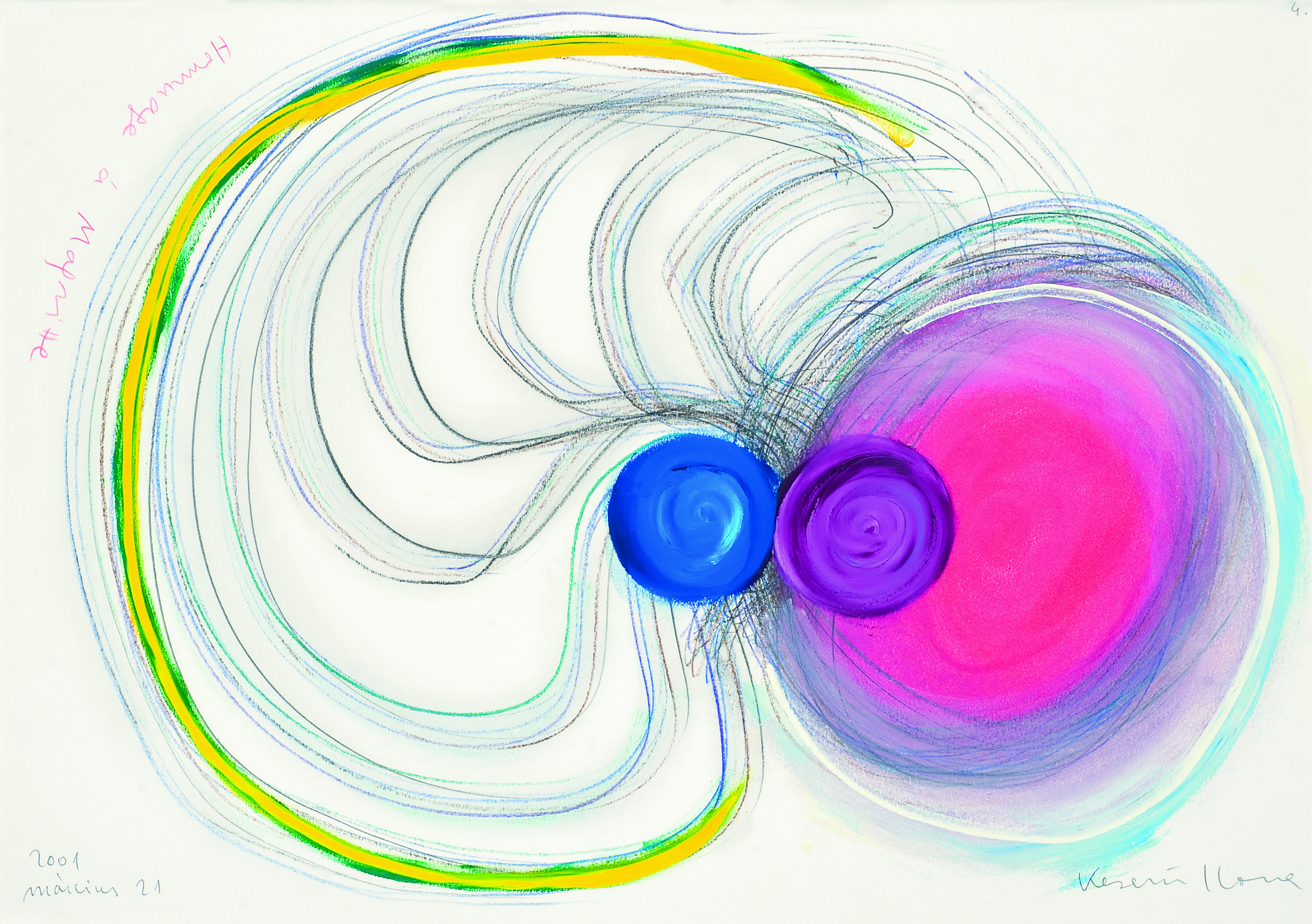
We use cookies to provide you with the best possible service and a user-friendly website.
Please find our Privacy Policy on data protection and data management here
Please find more information on the cookies here
Graphic cabinet - 30 November 2023 – 21 April 2024
Ilona Keserü, Kossuth and Munkácsy award-laureate painter and graphic artist, a seminal figure of contemporary Hungarian art, celebrated her 90th birthday on 29 November 2023. To mark this occasion, the Hungarian National Gallery is paying tribute to the artist with an exhibition of her graphic oeuvre, comprising paper-based works, drawings, and prints. The selection of paper works presents a career of more than seven decades, spanning from her early period as a student of Ferenc Martyn through the vibrant screen prints to the softly rendered Indian ink drawings. Visitors can see sixty-four works selected from the artist’s studio in Budapest, including works never displayed to the general public before.
Ilona Keserü’s oeuvre is recognised and renowned not only in Hungary but also internationally, and after the numerous exhibitions organised in recent years abroad, her greatness as an artist is indisputable on the international art scene too. The show organised by the Hungarian National Gallery presents the artist’s graphic oeuvre, spanning seven decades but thus far less discussed, through iconic pieces – produced with printmaking and individual drawing techniques – such as the early studies, Indian ink drawings made abroad, works with tombstone motifs made in the late sixties in Balatonudvari, the after-images from the eighties and nineties and her latest prints Creature – Colour Leaps.
Drawing, as a primary experience, accompanied Keserü throughout her youth. Alongside her secondary school studies, she had the opportunity to learn from the painter Ferenc Martyn. She enrolled in the Academy of Fine Arts in 1952, where she studied under László Bencze in the Department of Painting. Three years later she became a student of István Szőnyi, attending his fresco painting classes at the Epreskert campus. Travelling and ’seeing the world’ have always been an important part of her life: in the early 1960s, she went on a private trip to Rome for several months, where she recorded her experience in drawings rather than photographs. Capturing the visible world is still discernible in her drawings made during her first sojourn in Rome but from the sixties, she gradually turned her attention to abstraction.
The exhibition’s first unit, titled From Contemplation to Abstraction, presents a selection of the artist’s early drawings, made in the fifties and sixties. Ilona Keserü’s art is mainly characterised by abstraction composed of fine wavy lines and gestures. These paper-based works, however, reveal how the initial approach of her early career, i.e., observing and then capturing the world and her environment, morphed into an intuitive painting of colours and signs visualising inner feelings.
The tombstone shapes, which Ilona Keserü discovered in a small baroque cemetery in Balatonudvari, are the focus of the next chapter of the exhibition. They have clearly been one of the most iconic motifs of her art since 1967, recurring in her paintings, graphic works, and embossed canvasses. They have re-emerged in her oeuvre for decades, always adding new facets and apparently remaining as a source of inspiration even today. The curved forms of the heart-shaped tombstones made a profound impression on Keserü and have become an integral part of her visual expression.
Colour research became Keserü’s artistic mission and remains an integral aspect of her creative process to this day, as demonstrated by Colour Research, the second unit of the exhibition. Inseparable from Ilona Keserü’s name is the use of vivid colours, grounded in extensive theoretical research. From the eighties onwards, colour research – in the form of scientifically based artistic experimentation with the colours of the spectrum and the colours of the rainbow – has become a constant theme in her art. She was especially fascinated by the pure colours of refracted light and the highest intensity that can be mixed from paint. Her colour research has taken many directions, introducing new chapters into her oeuvre: the resonance between certain skin tones and the colours of the rainbow; the “colour-eights”, which were subsequently given spatial expression as Moebius strips; the phenomena she refers to as after-images; and the effects of cangiante colour shifting.
The third exhibition section is titled From After-Image to Creature – Colour Leaps. The after-images that appear from the 1980s, which can essentially be seen as one of the subchapters in the artist’s colour research, investigate a phenomenon that is universally familiar, although Keserü is unique in her artistic exploration of the theme. “The vision that appears behind closed eyelids, the extremely intense secondary image, manifested in the colours of light, of an occurrence of dark/pale, light/shadow that has been stared at intently beforehand. After-image visions are processes that move, teem, float away, illuminate, occur.”
In 2001 Keserü returned to Rome, a place that had played a decisive role in her artistic development. She spent two months in the Italian capital, rediscovering her experiences of forty years earlier in the transformed city. Once again, she was enthralled and inspired by the intricate details of the Renaissance and baroque buildings. The exhibition displays some of the drawings she made during this period.
Ilona Keserü is still active today: her latest screenprints are titled Creature – Colour Leaps. The series was made over the last two years in the Papírmalom (Papermill) graphic design studio in Orfű, also utilising the discipline of mathematics. Some of these works are also included in the displayed graphic material.
The exhibition is accompanied by a publication based on an interview conducted with the artist.
Curator of the exhibition: Krisztina Csizmadia, art historian
30 November 2023 – 21 April 2024
Online ticket purchase